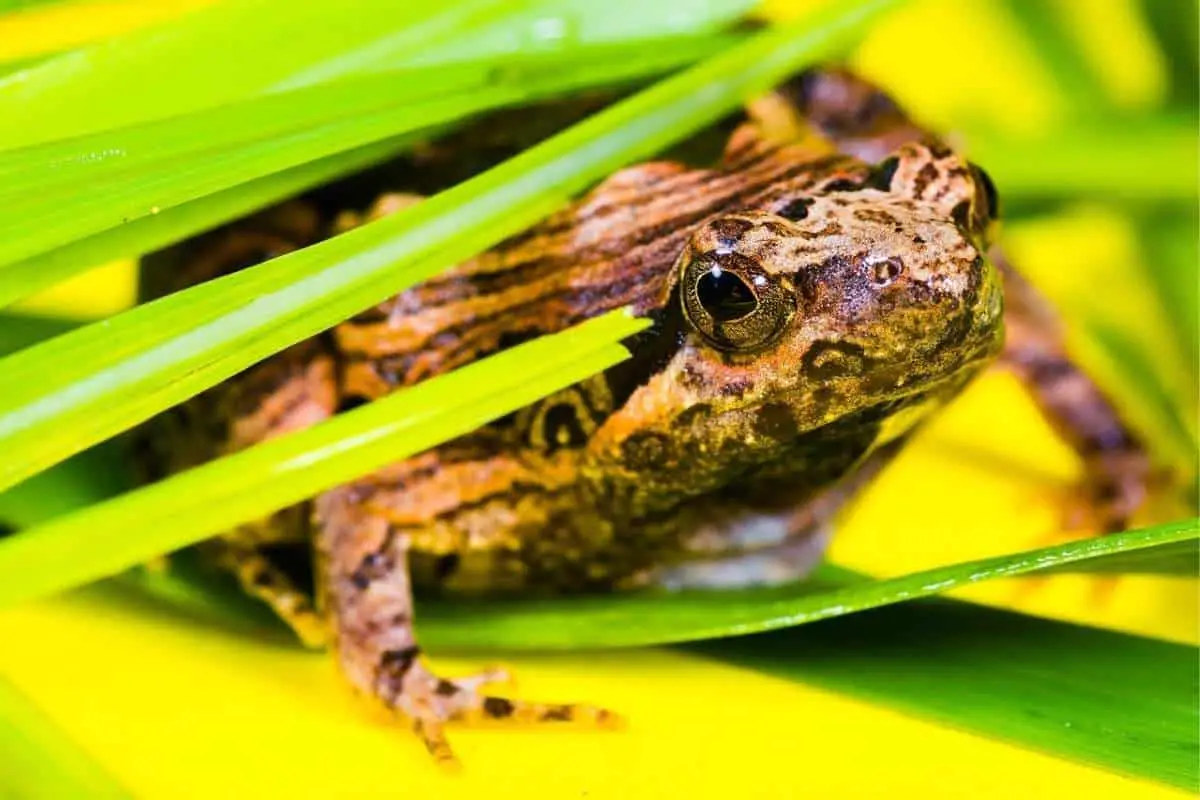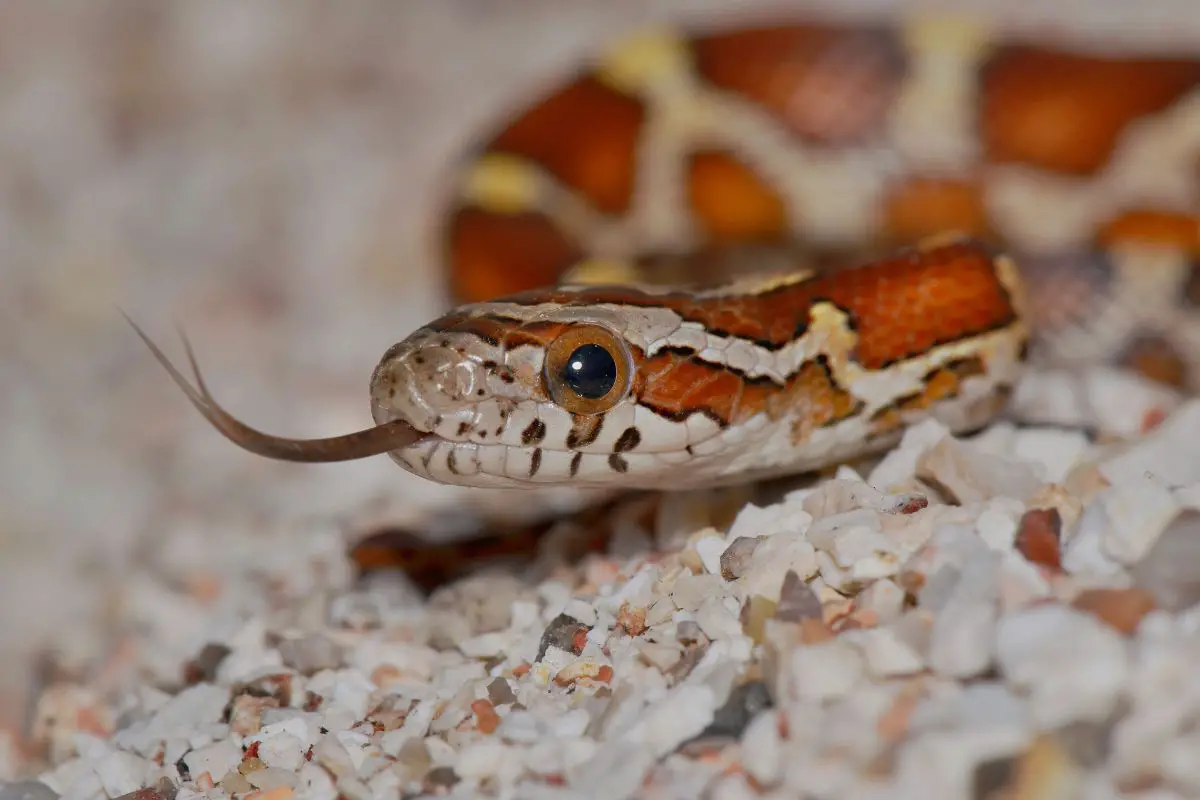It is not surprising that many people confuse toads and frogs because there are many frogs that look like toads. These animals belong to the same order of amphibians. Although they appear identical, there are some significant differences that allow you to distinguish between the two.
For starters, frogs typically have smoother, softer skin than toads, which tends to be bumpy and dry. Frogs are also more likely to reside near water than toads do, so this is another way that they differ from one another.
In the end it’s really just an opinion as to whether a certain species of frog looks like a toad. In this article, you’ll learn about some of the frog species that are sometimes mistaken for toads.
What’s the difference between a frog and a toad?
The distinction between a frog and a toad lies mainly in their appearance and habitat. Frogs tend to have moist, smooth skin and are often found near water sources, while toads typically have drier, bumpy skin and are adapted to drier environments. These differences in skin texture and preferred habitats help categorize them, but their basic lifestyles and behaviors remain quite similar.
12 Frogs that look like toads
1. American Bullfrog

Scientific Name: Lithobates catesbeianus
The American Bullfrog is a large, stocky amphibian native to North America. This frog can reach a length of 8 inches. It has a broad and flat head with a large mouth, and its skin is bumpy, similar to that of a toad.
However, unlike toads, their skin is usually wet because they live in still, shallow waters such as the edges of ponds, rivers, and streams. Its main sources of food are worms, insects, crayfish, fish, frogs, and other vertebrates that can fit in its mouth.
2. Fujian frog
Scientific Name: Glandirana minima
The Fujian frog is a small, dark-colored amphibian with the appearance of a toad. This frog was named after the Chinese region where it was discovered. It’s indigenous to China, more specifically in the province of Fujian, where you can find it in rivers, swamps, marshes, and ponds.
Though they’re true frogs, these creatures are often confused with toads due to their stocky shape, dark color, and warty skin.
3. Imienpo Station frog

Scientific Name: Glandirana emeljanovi
A toad’s skin is typically bumpy and rough, and Imienpo Station frogs also have these characteristics. These small frogs are native to Asia and can grow to be up to 6 cm long.
They have grayish brown skin that’s wrinkled and rough, as well as black spots on their backs. These amphibians are also sluggish and poisonous, just like toads.
Imienpo Station frogs can be found in a variety of wetland habitats, including marshes, pools, lakes, ponds, swamps, and slow-moving streams.
4. Mindanao horned frog
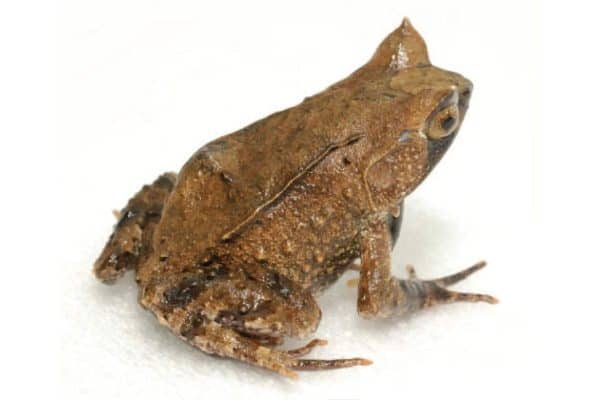
Scientific Name: Pelobatrachus stejnegeri
Mindanao horned frog is a species of amphibian native to Mindanao in the Philippines. They live in moist lowland forests, rivers, and other freshwater environments.
Because of their wide head and bumpy body, these frogs resemble toads. The back skin is light brown, with bumps and horn-shaped features on the head.
These frogs eat insects like ants and termites, as well as spiders and other small invertebrates like snails and crickets. They have also been observed eating smaller frogs.
5. Crowned bullfrog
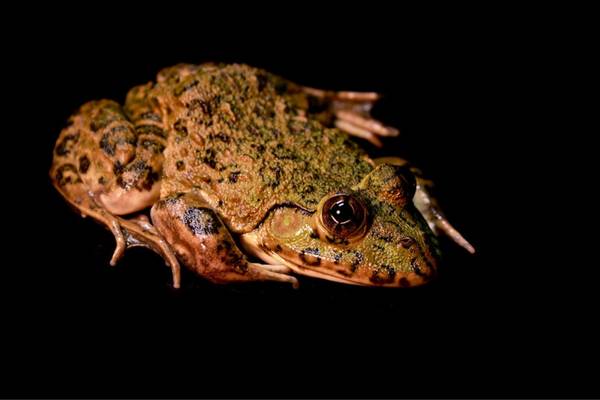
Scientific Name: Hoplobatrachus occipitalis
This large-bodied amphibian is a toad-like frog species native to Africa. The rough skin and bumps on the stocky body of the crowned bullfrog cause it to be mistaken for a toad. It has greenish-brown skin with black markings on its legs.
Insects, beetles, tiny toads, and even their own tadpoles are among their primary sources of food. You can find this frog in a variety of habitats, such as savannas, moist lowland forests, shrublands, rivers, and marshes.
6. Japanese wrinkled frog

Scientific Name: Glandirana rugosa
Japanese wrinkled frog is a native of Japan that was introduced to Hawaii. As the name suggests, the Japanese wrinkled frog is a small amphibian with wrinkly skin on its pale or dark brown body.
It has dark stripes and large eyes as well. This appearance makes this frog look like a toad.
In the wild, they inhabit wet places like swamps, rice paddies, and ponds. The frog’s diet consists of insects, arachnids, and crustaceans.
7. Edible bullfrog
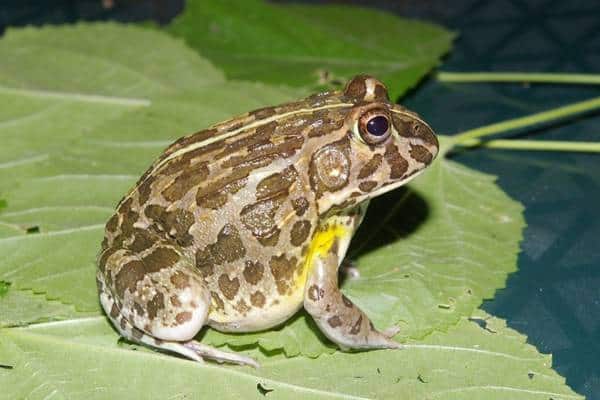
Scientific Name: Pyxicephalus edulis
Edible bullfrogs are large, dark green frogs that resemble toads. They also have warts and dark blotches all over their bodies.
This species can grow to be up to 4,7 inches long, with males being larger than females. In addition, females have a stripe that extends from the top of their heads all the way down to their noses, which is less evident in males.
This bullfrog is found in flooded grasslands and marshes. They eat spiders, tadpoles, and other frogs in their vicinity. These amphibians will also eat small birds if they come across them near their waterside home.
8. Chiricahua leopard frog

Scientific Name: Lithobates chiricahuensis
The Chiricahua Leopard Frog is an amphibian species native to the United States, specifically in Arizona and New Mexico. They have spots running across their backs and are a dark green color. These amphibians have a stocky build that initially gives them the appearance of toads.
Chiricahua Leopards feed on insects such as ants, beetles, crickets, flies, spiders, and small fish, frogs, or toads. This species can live for up to 18 years in their natural habitats, which include rivers, swamps, freshwater lakes, ponds, and terrestrial forests.
9. Mississippi gopher frog
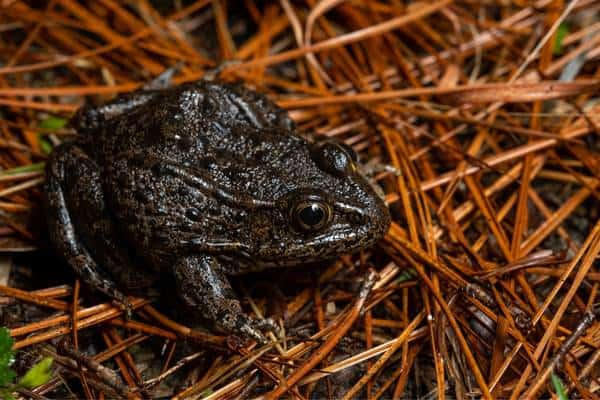
Scientific Name: Lithobates sevosus
The Mississippi gopher frog is a small, dark-colored frog found in the southeastern United States. The back of this frog is dark-brown or black, with dark spots and warts. The color and warts on its large body give this species the appearance of a toad, but this frog only grows to be 3 inches long.
Mississippi gophers spend the majority of their time in sandy areas with abundant ground cover, where they live and use the burrows abandoned by other animals, such as tortoises and crayfish.
10. Banded Bullfrog

Scientific Name: Kaloula pulchra
The Banded Bullfrog is a chubby, dark-colored, narrow-mouthed frog found in Southeast Asia. It can be found in both forests and urban areas.
They’re distinguished by their stocky build, dark brown color, and copper stripes. Although these frogs are only 3 inches long, they have a loud, cattle-like bellow. Ants, termites, and other small invertebrates such as moths, earthworms, and flies are their primary food sources.
These amphibians can survive in dry climates and burrow underground during the dry season, waiting for the rainy season to arrive so they can breed with other frogs.
11. Surinam horned frog

Scientific Name: Ceratophrys cornuta
The Surinam horned frog is a large and distinctive amphibian that lives in South America’s rain forests and swamps. This species can reach a size of 8 inches and has a horn-like feature on its head that it uses for camouflage on the forest floor. Female Surinam horned frogs are mostly tan, but males can be brown or green.
Surinam horned frogs spend the majority of their time burrowed in leaf litter, where they camouflage and wait for prey. They eat insects and small horned frogs found in their environment.
12. River frog

Scientific Name: Lithobates heckscheri
The River Frog is a large frog native to the southeastern United States. This species can grow to be 5 inches long and has a blackish-green skin with dark specks.
They have white spots on their lips as well. Since their skin is rough and dry, these frogs are sometimes mistaken for toads.
However, these amphibians live in marshes and other wet areas and spend most of their time in the water. They also feed on crayfish, leeches, and other invertebrates. River frogs will also eat fish, frogs, and small snakes.
